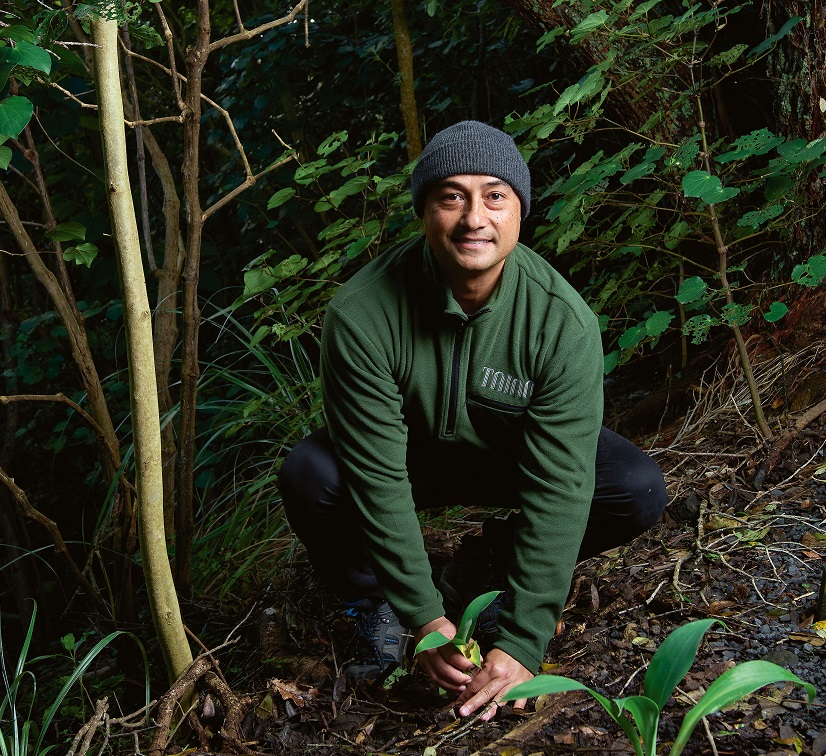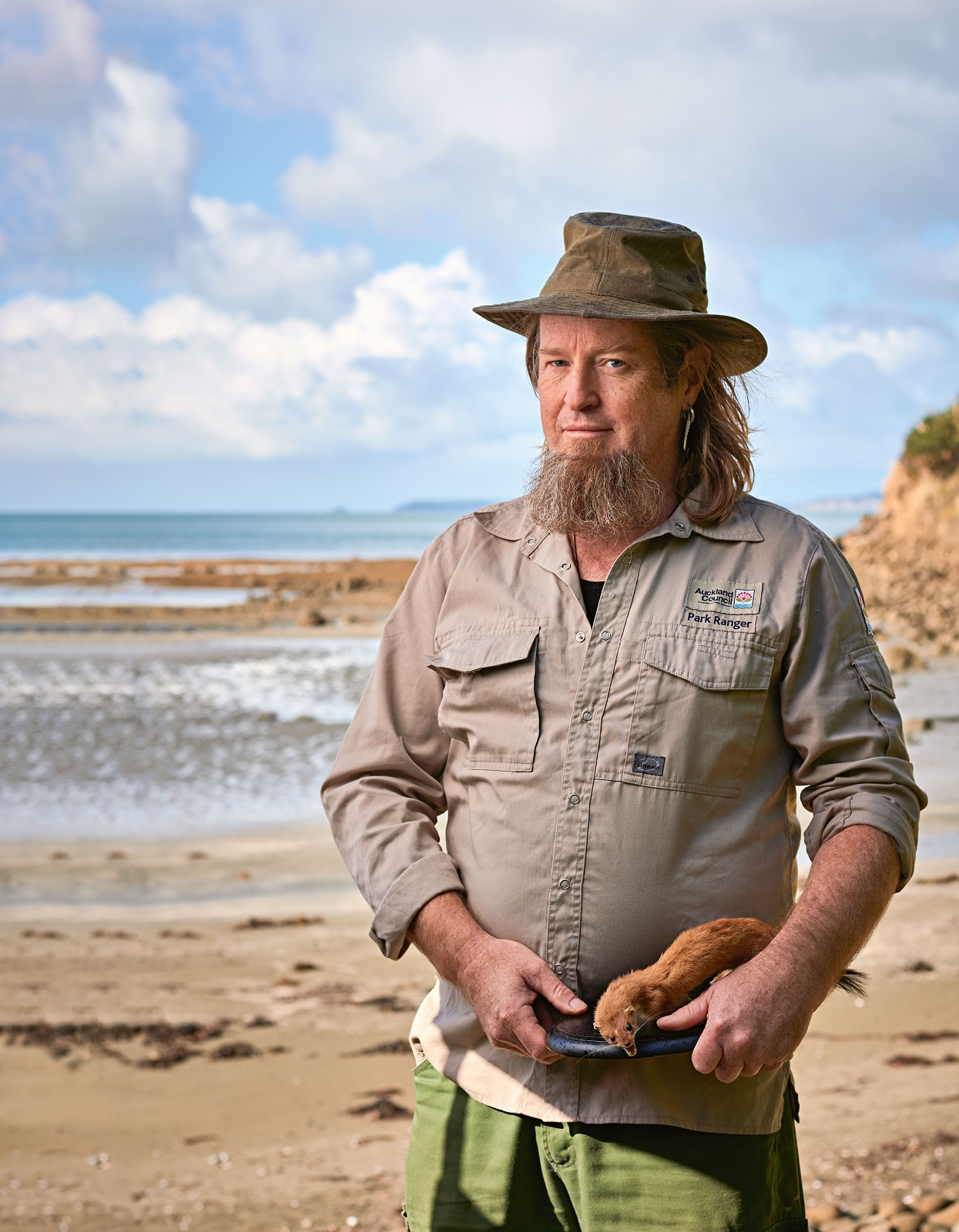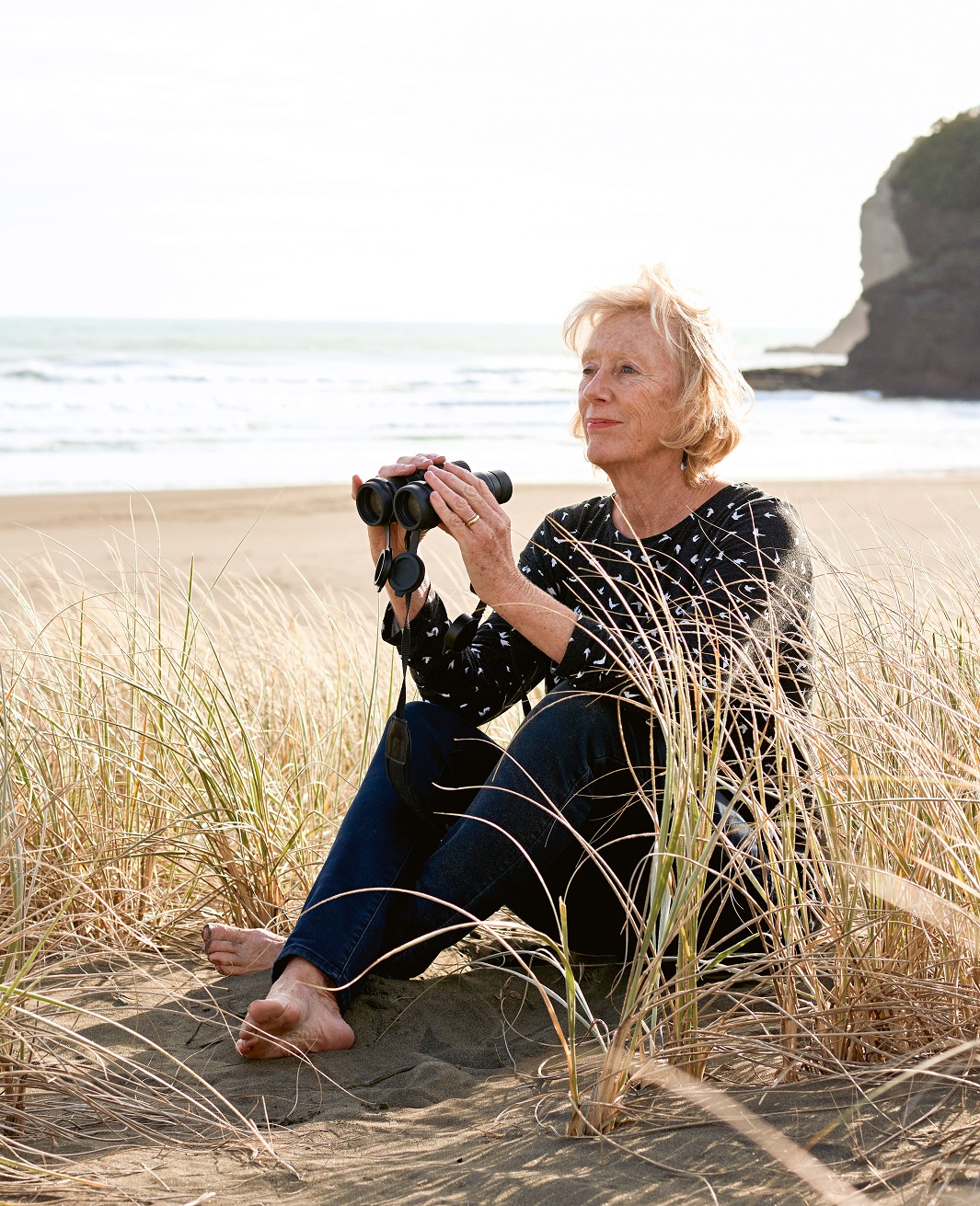Not all heroes wear capes - many wear gumboots and carry traps.
They are our eco heroes, people in our community who work to protect Auckland’s natural spaces and resources.
Regenerating forests and waterways
Pāora Puru has his grandmother to thank for teaching him the “traditional esoteric Māori ways of the natural environment”.
“She was in tune with nature and taught me that when we have a healthy ecosystem, we have a healthy people,” says Puru.
A member of the Te Taiao Kaitiaki Team, or environmental officers, at Ngāti Te Ata Waiohua, which covers Tāmaki Makaurau (their Waiohua whakapapa) and Northern Waikato (their Waikato-Tainui lineage), Puru is responsible for regenerating the mauri (life force) of forests and waterways.
“It’s about restoring the natural balance that’s been thrown out by everything from the introduction of exotic plant species such as pine and macrocarpa, introduced animal pests and polluted waterways which impact on the native riverbank vegetation, as well as fish, birdlife and insects. Our aim is to regenerate the landscape because if we look after Mother Nature, she’ll look after us.”

Pāora Puru
Planting at Āwhitu Peninsula
One of the key projects for the iwi is at Āwhitu Peninsula, in partnership with Āwhitu Landcare and Auckland Council, where months of fencing and planting native trees such as, mānuka, kānuka, māhoe and harakeke flax is occurring on selected areas, including cultural sites.
“Traditional planting is informed by the lunar calendar (maramataka), so we’ll plant according to the moon cycle. We also plant trees according to the trees’ whakapapa or lineage, which involves planting rimu, tōtara and mataī together because they’re a whānau and their roots can intertwine. In waterways, we’ll plant raupō, wharariki and harakeke, because they’re a family group.”
Stamping out stoats
About 40 North Island brown kiwi chicks are killed every day by stoats - that’s 15,000 a year.
Matt Maitland has spent 25 years battling stoats and the Senior Ranger Open Sanctuaries for Auckland Council says the war against them continues, particularly at Shakespear and Tāwharanui Regional Parks, which Maitland oversees.
“It’s certainly very different now than it was early in my career when our ability to control stoats was uncertain,” says Maitland.
Eradicating stoats and pests, with only the odd one or two stoats found in both regional park sanctuaries each year, is something they’d successfully achieved. Up until late last year, that is, when it’s believed a lone female stoat had up to 11 offspring somewhere in Shakespear’s 500 hectares. And those offspring are getting smarter about being caught.

Matt Maitland
Using technology to fight pests
“We’ve ramped up our buffer control efforts and volunteers have also set traps up to 7km away from the predator-proof fence. So far we’ve trapped eight of the female’s young but it’s a race against time because in spring, the remaining stoats will start breeding.”
What’s at stake are the vulnerable populations of little spotted kiwi, tīeke, hihi and pāteke in Shakespear, as well as a recovering seabird population.
It’s why Maitland and his team have employed thermal imaging cameras, a stoat detection dog, and even AI thermal signature image recognition to help locate the pests.
“The ultimate aim is to have abundant native species to the point where we could tear down the fences and they could move beyond the sanctuary.”
Saving our dotterels
They’re rarer than kiwi, with only around 2500 left in Aotearoa. That’s why Lesley Gardner and her husband Richard started Te Hēnga Tūturiwhatu, a group at Bethells Beach (Te Hēnga) dedicated to protecting the Tūturiwhatu or dotterels.
“We estimate around 30-60 dotterel eggs have been laid over the past decade at Bethells Beach,” says Gardner, who’s lived there for five years.
“Yet only one of those chicks survived and was able to fly away. They’ve been trapping and baiting rabbits here since 2002 but we’re focused on predators such as dogs, cats, stoats, harrier hawks and black-backed gulls. The chicks are tiny and two hours after hatching in the dunes they leave the nest to forage for food. That leaves them incredibly vulnerable to predators.”

Lesley Gardner
Education a powerful conservation tool
Even well-behaved dogs can be an issue, says Gardner, because the dotterel parents will try to frighten off the dogs, leaving their chicks at the mercy of aerial predators who swoop in to grab them.
For the Gardners and their 20-plus strong group, it’s about raising awareness of these native birds. Their work, along with countless others throughout the country, has seen an improvement in the bird’s conservation status from “declining” to “recovering”.
“We put a lot of effort in, educating people about the need to keep their dogs on leads, to keep cats inside at night and not take kelp which provides food for the dotterels to feed on. Between 2011 and 2017, no dotterel chicks were fledged - able to fly away - but for the first year of our group, one chick fledged. This year we’ve managed to fledge two chicks who were recently spotted around Karekare.”

